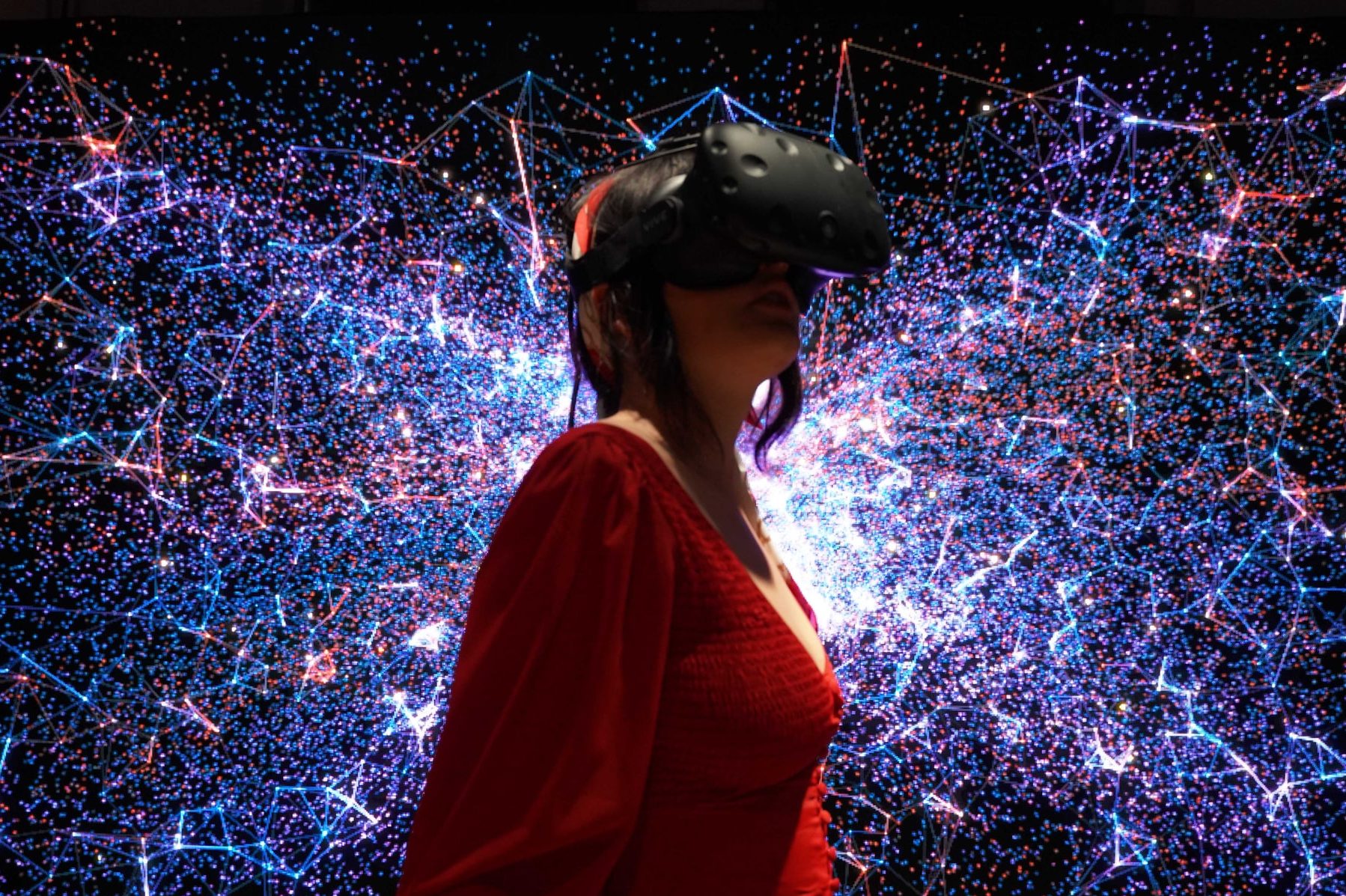Virtual reality, creativity and dementia care

White wooden porches in front of colonial style houses line up on either side of the street. Rocking chairs, planters and park benches are scattered nearby. Above is an endless expanse of azure blue. A green lawn resembling the topography of a miniature golf course runs the entire length of the central area (the only feature that seems strange at a glance – what’s a golf course doing in the middle of the street?). This isn’t a friendly village in old town America, but an experiment in social care that could pave the way for how all assisted living facilities are designed in the future.
Retrogenesis, the theory that patients in various stages of dementia revert to their childhood, was the inspiration behind a very novel way of how to approach the design of an assisted living facility. When thinking about how these homes should function, Jean Makesh, CEO and an Occupational Therapist from Lantern in Ohio, has explained that the convention of making his facility look like an institution or hotel didn’t make sense to him (Albrecht, 2018). Instead, the idea was for the interior to reflect the era in which the occupants had been children. Lantern was opened in around 2018, so this meant making the interior resemble a 1940s small town. You can almost smell the home baked cookies floating out of the New England style window frames as you watch the guided tour in the promotional video. In another video the interviewer asks if the patients can play golf on the central carpet area and the Lantern employee says “…sure, they play here all the time.”
Robert Harvey House in Birmingham (Nye, 2019) has also been designed to enhance the quality of life for its residents. For them the solution was to create a safe environment that was physically outside as well as inside. The facility resembles a friendly English village complete with its own little high street, featuring a butcher shop, tea room and a Post Office (just in case you need to have a gossip with your neighbours). There’s even an old style sweet shop full of cola drops and sherbert dip dabs. The difference here is that all the facilities are physically outdoors.
Similarly, this article sheds light on the use of Virtual Reality in the healthcare sector and the appliance of cutting-edge technologies as an alternative way to bring the outside world into the buildings of those who are unable to go out (Rose et al., 2019). Is a virtual flight to far distant places a good way to alter the routine of a patient? What about a simulated Latin dance party or drinking in a dive bar listening to “Welcome to The Jungle” by Guns n’ Roses?
Based on the literature, a study conducted by the University of Kent (2019) revealed the efficacy of Virtual Reality Therapy for people with dementia in a way that uplifts patients’ moods, whereas a mixed-methods study showed that the use of VR worked as motivation for patients (Rose et al., 2019). In corroboration, another study by Kim, Park and Lim (2021) undertaken in South Korea concluded that VR Therapy could effectively alleviate the behavioral and psychological symptoms of dementia.
According to the Office for National Statistics (2020), mortalities caused by dementia and Alzheimer’s accounted for 12.7% of all deaths registered in 2018, and they were considered the leading cause of death in that year, in England and Wales. Globally, it is estimated that 139m people in 2050 will be diagnosed with dementia, three times the number in 2018 (World Health Organization, 2021). In addition, Alzheimer’s Research UK (2022) reveals that the estimated cost of dementia will be 47 billion in 2050 in comparison to 25 billion in 2021, in the UK alone.
These figures highlight the critical need for improvements and changes in the field of dementia care, aiming for better treatments and enhancing the quality of life for people who are living with this disease. For successfully implementing a change in the healthcare sector a prepared, systematic, and planned approach should be adopted. To cite an example, Lewin’s Three Step Model of Unfreezing, Change, and Freezing (Burnes, 2019) or Kotter’s 8-step change model (Galli, 2019), are highly recommended for implementing adaptations and changes in the contemporary health service delivery. However, it is worth mentioning that the appropriacy of a model relates to the area of focus and the settings that the changes will take place in (Galli, 2019) whereas management and cost implications will have to be examined in more detail for it to work to its full potential.
Overall, the high prevalence of mental health disorders and the increase of lifespans have made the need for adaptation and change more necessary than ever before. Efficient, safe, accessible, and patient-centred improvements in healthcare quality can help people with mental illnesses thrive. For achieving patient-centred care, a holistic approach should be adopted whereas care delivery should also be informed by patients’ and caregivers’ experiences. Management models should be used as they provide a framework and guide to support change, while contemporary healthcare systems also need creativity and people with the vision and drive to implement their innovative ideas.
This article was co-written by Maria Saoulidou, a social worker and a MSc student in Mental Health and by the writer Seb Duncan.
References:
- Albrecht, B., 2018. Lantern of Chagrin Valley uses past to treat present dementia. Available at: <https://www.youtube.com/watch?v=b_793ymDDI0&t=11s> [Accessed 15 June 2022].
- Alzheimer’s Research UK, 2022. Cost and projections in the UK and globally. [online] Available at: <https://www.dementiastatistics.org/statistics/cost-and-projections-in-the-uk-and-globally-3/> [Accessed 15 June 2022].
- Burnes, B., 2019. The Origins of Lewin’s Three Step Model of Change. Journal of Applied Behavioral Science. SAGE Publications, [e-journal] 56 (1), pp. 32-59. https://doi.org/10.1177/0021886319892685.
- Galli, B.J., 2019. Comparison of Change Management Models: Similarities, Differences, and Which Is Most Effective? In: Daim T., Dabić M., Başoğlu N., Lavoie J., Galli B. (eds) R&D Management in the Knowledge Era. Innovation, Technology, and Knowledge Management. Springer, Cham. pp.605-624.
- Kim, J.H., Park, S. and Lim, H., 2021. Developing a virtual reality for people with dementia in nursing homes based on their psychological needs: a feasibility study. BMC Geriatrics, [e-journal] 167.https://doi.org/10.1186/s12877-021-02125-w.
- Nye, C., 2019. The care home that built a replica High Street. BBC News, [online] 24 June. Available at: <https://www.bbc.co.uk/news/uk-england-48691933> [Accessed 19 June 2022].
- Office for National Statistics, 2020. Leading causes of death, UK: 2001 to 2018. [online] Available at: <https://www.ons.gov.uk/peoplepopulationandcommunity/healthandsocialcare/causesofdeath/articles/leadingcausesofdeathuk/2001to2018> [Accessed 20 June 2022].
- Rose, V., Stewart, I., Jenkins, K.G., Tabbaa, L., Ang, C.S. and Matsangidou, M., 2019. Bringing the outside in: The feasibility of virtual reality with people with dementia in an inpatient psychiatric care setting, [e-journal] 20(1), pp.106-129. https://doi.org/10.1177/1471301219868036.
- University of Kent, 2019. VR can improve quality of life for people with dementia. ScienceDaily, [online] Available at:
<https://www.sciencedaily.com/releases/2019/05/190509080035.htm> [Accessed 20 June 2022].
- World Health Organization, 2021. Dementia. [online] Available at: <https://www.who.int/news-room/fact-sheets/detail/dementia> [Accessed 20 June 2022].

